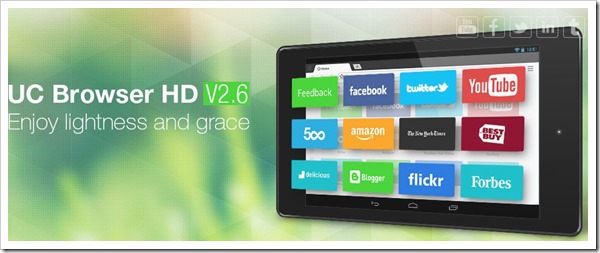UC Browser Goes Against Unification- Brings 3 Separate Mobile Browser Versions
For those who are not very browser caring, UC browser has taken the mobile world by storm. And in India, you may be surprised to know that it is the most popular browser, beating likes of Chrome and Opera. In its latest iteration for Android, UC browser has focused on providing best performance for individual devices rather than going with a single app for all devices.

Three versions have been launched by UCWeb, Inc.-
- UC Browser 9.5
- UC Browser Mini 9.0
- UC Browser HD 2.6
The first two browsers are for mobiles whereas the third one is specifically designed for tablets.
UC Browser 9.5
Boasting the fastest download speed among any browser, the latest version claims to be 15% faster on 3G and Wifi than previous version. Even the 2G performance has been improved for a better experience. There is also a Home screen widget that makes some of the UC functions like search, download, settings etc. quicker to reach than opening the browser.
In addition to this, this version has Web Application centre which gives users the opportunity to use HTML5 apps from the speed dial. Also, regional language support has been added for many languages like Tamil, Telugu etc.
UC Browser Mini 9.0
While the above browser is the full-fledged all you can have browser, this one is made for the Android phones with lower Specs. With about 1 MB in size, it is for people who own a phone that is not smoothly operating with the above version. UC has not skipped too much with the features however and while it may not be as impressive as the 9.5 version, on a regular phone in India, this one would probably be the go to browser.
3. UC Browser HD 2.6
Made for tablets and large phones, this version changes the previous one with a new UI, ad blocking compatibility, and improved search. The UI has been overhauled completely to make it pleasing to the eye and more intuitive to use.
The approach of UC is correct in my opinion, especially in regions like India. Here, we have phones that range from 256 MB RAM to 3 GB RAM. Also, processing speed and space in the phones can sometimes take its toll especially since a lot of memory is already hogged by the company that is making the phone. It is also in tune with Google’s as they make their OS more approachable by making it work on lower specs.
However, it might take more resources for the company to maintain three separate browser up and running.
What is your opinion – Do you think it is a right strategy to have separate browsers for different devices, rather than going for a unified one?
